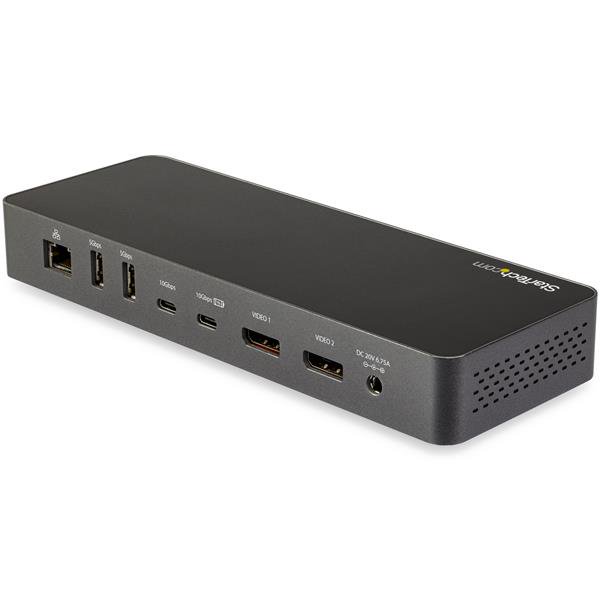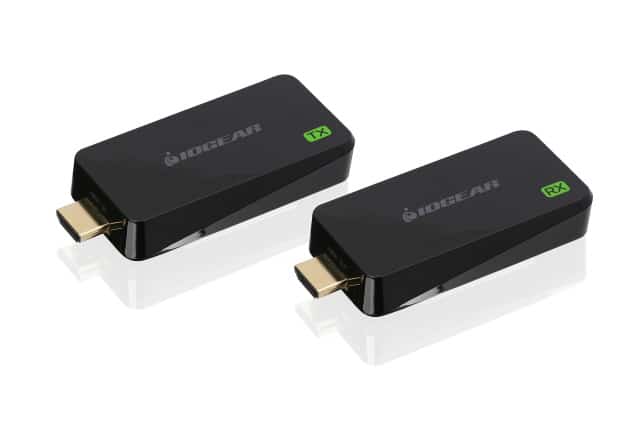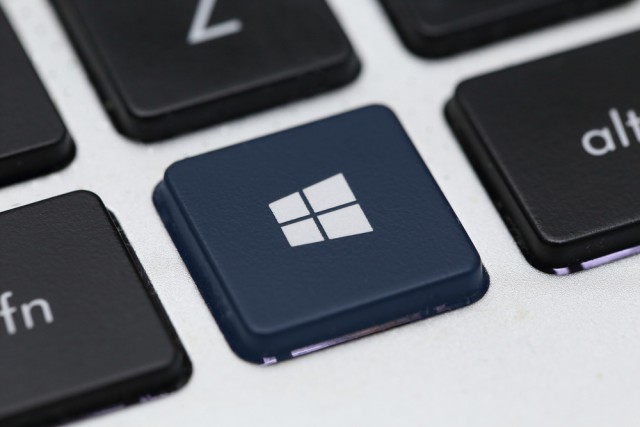
Yes, Google really is listening in on what you say to Google Assistant
You may well have suspected it, but now Google has confirmed it -- contractors for the company are able to listen to what you say to Google Assistant.
The revelation came after recordings of people using the AI-powered digital assistant were leaked. Belgian broadcaster VRT News obtained a large number of Dutch language recordings and was able to hear highly personal information about users -- even if they had not used the "OK Google" trigger words.

StarTech.com launches revolutionary hybrid Thunderbolt 3 and USB-C docking station
Thunderbolt 3 and USB-C use the same connector, but the interfaces are not identical. Thunderbolt 3 is much faster than both USB 3.1 gen 1 and gen 2, for instance. And while all USB-C devices are compatible with Thunderbolt 3 computer ports, TB3 devices are not compatible with USB-only ports. Confusing, right? If you are a BetaNews reader maybe not, but think about the average consumer -- this can be very frustrating.
Shopping for docking stations in particular can be overwhelming. What if your home or business has users that want to use the same docking station at different times, but some machines are USB-C only and others are Thunderbolt 3. Sure, a USB-C dock would work, but then the TB3 machines wouldn't be reaching their full potential. Well, the folks over at StarTech.com have essentially solved this dilemma with a new product. The "TB3CDK2DP," as it is called, is a hybrid Thunderbolt 3 and USB-C dock!

Microsoft sneaks telemetry into Windows 7 via security update
Microsoft appears to be at it again, adding telemetry components into its operating system. This time around it is Windows 7 that gets the telemetry treatment, and Microsoft seems to have gone about things in a rather sneaky fashion.
The latest "security-only" update for Windows 7 includes a Compatibility Appraiser element (KB2952664) which performs checks to see whether a system can be updated to Windows 10. Hardly what most people would consider a security-only update. So what's going on?

Here's how to play the super secret Google tennis game
Google may be a publicly traded company worth hundreds of billions, but it still knows how to have fun. In other words, sometimes Google acts like a start up, even though that ship sailed a long time ago. Every once in a while, the company will hide an Easter Egg or other secret thing in its services. For instance, did you know that doing a Google search for the word "askew" without quotes will make the page tilt? It's true -- go try it! It is silly and fun.
Continuing with silly antics, Google has hidden a secret tennis game in its search engine. Believe it or not, it is actually very fun to play. Accessing it couldn't be simpler either.

Two-thirds of organizations think they'll need AI to respond to future cyber threats
New data from the Capgemini Research Institute reveals that 69 percent of organizations believe that they won't be able to respond to critical cyber threats without AI.
Over half (56 percent) of executives say their cybersecurity analysts are overwhelmed by the vast array of data they need to monitor to detect and prevent intrusion. In addition, the type of cyberattacks that require immediate intervention, or that cannot be dealt with quickly enough by analysts, have increased

New platform simplifies handling multi-cloud environments
The rise of cloud adoption has led many businesses to adopt an environment where computing requirements are decoupled from storage and scale independently. But this leads to problems with accessibility and data management.
A new platform launched today by Alluxio provides improved orchestration for data engineers managing and deploying analytical and AI workloads in the cloud, particularly for hybrid and multi-cloud environments.

Ditch the HDMI cables with IOGEAR's Share Pro Mini Wireless HD Video Transmitter and Receiver [Review]
The humble HDMI cable is simultaneously brilliant, and a massive pain in the ass. Great for delivering HD video from your computer to a TV or projector, but a serious downside is the fact that, well, it's a cable. Who hasn't yearned for a wireless HDMI cable?
This is, effectively, what the Share Pro Mini Wireless HD Video Transmitter and Receiver Kit from IOGEAR is (GWHD2DKIT). It's a two-part piece of equipment that lets you stream audio and video up to 12m (40 feet) wirelessly. Best of all, there's no software involved, and no need for Wi-Fi.

Summer heightens cyber security risks
You might think that cyber attacks are a constant year round activity, or perhaps that they are focused on peak shopping periods like Christmas. But a new study from threat protection specialist Lastline reveals many security professionals believe their organizations are more at risk in summer.
In a survey of 1,000 security professionals more than half believe cyber attacks are seasonal and 58 percent of those (30.5 percent overall) say that they see more attacks during the summer months.

Ekster Parliament 3.0 voice-activated smart wallet [Review]
There are three things you likely never leave home without -- your wallet, phone, and keys -- and it could be devastating if you lost any of them, or had them stolen.
Ekster 3.0 launched a couple of days ago and is the world’s first voice-activated smart wallet, with worldwide traceability, quick card access, and RFID protection. You can use your phone to track down the wallet should you lose it, and use the wallet to find your phone if that goes missing. (It can’t help with your keys though, so take good care of those).

Easily share large files with Dropbox Transfer
Dropbox has revealed a new file sharing service that makes it possible to send files of up to 100GB.
The company says the service has been designed as a quick and easy alternative to configuring sharing and permissions, and it means that it is possible to share large files even with people who do not have Dropbox accounts.

Apple Watch eavesdropping vulnerability forces Apple to disable Walkie-Talkie app
Apple has disabled the Walkie-Talkie app for Apple Watch after a vulnerability that potentially allows for eavesdropping on iPhone conversations emerged.
The company says that it is not aware of any incidents of the vulnerability being exploited, and it has not shared any details of the security issue. Apple's short-term solution is to simply disable the app while it works on a fix.

Microsoft is retiring its 3D model repository Remix 3D
Microsoft has emailed users of Remix3D.com to warn them that the site is to be retired in six months' time.
The site is a repository of free 3D models designed to be used in the likes of Paint3D, PowerPoint and the Windows 10 Photos app. The move is not entirely surprising as the writing has been on the wall for some time -- references to Remix3D were removed from Paint3D some time ago, for instance.

Apple and Zoom push out updates to remove potentially privacy-invading web server
A few days ago, a security issue with the Zoom chat tool came to light -- a flaw that made it possible for Mac webcams to be switched on without permission. Despite seemingly suggesting that the flaw was in fact not a flaw, Zoom issued an update that grants users more control over the software.
Apple has also produced an update of its own which nukes the security hole. The silent update has been pushed out to users and is installed without the need for confirmation or user interaction.

Microsoft releases Windows 10 20H1 Build 18936 with passwordless sign-ins
Even though the next major feature update for Windows 10 isn’t due for a year, Microsoft is rolling out weekly new builds for it.
Windows 10 20H1 Build 18936 offers a number of new features, including the ability to go passwordless on your device, and create calendar events directly from the taskbar.

Is app apathy hurting your marketing?
Are you reaching your audience directly through mobile apps? If not, there is a whole new digital market that remains, literally, untapped.
Content consumption is nearly universal on mobile devices in 2019, especially on apps. From Instacart to Waze, apps capture the attention of billions on a daily basis. Three of every four users not only say their phone is useless without apps, but default to using apps when they’re bored. Access to these app users is easily unlocked for mobile marketers, who have access to targeting capabilities that other advertising forms do not. The prevalence of in-app marketing is currently the biggest shift in the digital marketing industry especially in the rapidly growing Asian marketplace, and any brand or company not taking advantage could fall behind fast.



